
Marta Miranda
– Branded Content Specialist & Producer –
If you don’t follow any influencers yet, we are sure you will want to do so from today on. First of all, please note that we are not talking about the well-known term “digital influencer” – the individual who has the vocation to generate engagement with a loyal community and who is able to influence a buying decision among his followers. We are, in fact, talking about a fictitious digital creation!
For some people this is nothing new, because at some point we have already had a Customer Service experience with a Virtual Assistant on a website. Imagining ourselves walking among robots on the street is still a distant reality, but in fact H2R – “Human to Robot” – interaction is evolving at a rapid pace in the reality of social networks.
Nevertheless, talking about virtual influencers is still a novelty, mainly because in the Portuguese market the trend is not explored. But you have to stay tuned, because at the international level, these new online personalities have been a recognized innovation and a bet in the area of Content Marketing already since 2018.

Marta Miranda
– Branded Content Specialist & Producer –
If you don’t follow any influencers yet, we are sure you will want to do so from today on. First of all, please note that we are not talking about the well-known term “digital influencer” – the individual who has the vocation to generate engagement with a loyal community and who is able to influence a buying decision among his followers. We are, in fact, talking about a fictitious digital creation!
For some people this is nothing new, because at some point we have already had a Customer Service experience with a Virtual Assistant on a website. Imagining ourselves walking among robots on the street is still a distant reality, but in fact H2R – “Human to Robot” – interaction is evolving at a rapid pace in the reality of social networks.
Nevertheless, talking about virtual influencers is still a novelty, mainly because in the Portuguese market the trend is not explored. But you have to stay tuned, because at the international level, these new online personalities have been a recognized innovation and a bet in the area of Content Marketing already since 2018.
Who are, after all, these virtual humans?
A virtual influencer is, then, a fictional personality with a first-person view of the world. Behind each creation are “anonymous” individuals acting in a personal capacity or as representatives of brands. The digital creation produced through technology usually uses software such as Photoshop, Illustrator, Lightroom, Blender, Cinema 4D, Maya, Unreal Engine, ZBrush, Modo, 3ds Max, Daz Studio, among others.
The virtual influencers that have stood out internationally on social networks (Instagram and Tik Tok) have, for the most part, physical characteristics and a first-person personality identical to that of human beings, with narratives that are real and close to what we live, which gives them credibility and interest to engage a community.
The theme is, therefore, top of mind in Influence Marketing, and many world-renowned brands have already made their debut in this new reality of influencing behavior and, ultimately, consumption.
Below we list some of the “Top 5” Influencers to start following:
- Lil Miquela (3 Million followers) – was one of the first virtual influencers to be created in the world. She is a creation of a Los Angeles startup specializing in artificial intelligence. The influencer shares fashion looks, with partnerships with luxury brands, and releases music that is available on Spotify.
- Shudu (232k followers) – with an extremely realistic image, the virtual influencer is a creation of photographer Cameron James Wilson. She has a modeling contract with a digital modeling agency and is a representative of the luxury fashion brand Balmain.
- Bermuda (271k followers) – has a more controversial image (she was a former Trump supporter, although she has changed her political views) and has gained followers through her relationship, and subsequent split, with another virtual influencer (Blawko). She is an influencer represented by a recognized PR Agency and her founders are believed to be the Cain Intelligence company.
- Blawko (143k followers) – this virtual influencer was created by the same startup that launched the virtual influencer Lil Miquela. He has a mysterious young image, as he always walks around with his face half covered and with an assumed streetwear style. He became known by dating the virtual influencer Bermuda and currently has a YouTube channel.
- Imma (380k followers) – this virtual influencer is considered a style icon and was created by the Tokyo-based computer graphics company Modeling Cafe.
 Source: Instagram – Preview Instagram Lil Miquela
Source: Instagram – Preview Instagram Lil Miquela
Source: Instagram – Preview Instagram Shudu
Source: Instagram – Preview Instagram Bermuda
Source: Instagram – Preview Instagram Blawko
Discover here an extensive list of virtual influencers you can follow on social networks!
The Virtual Influence Marketing
There seem to be two positions by brands to associate themselves with virtual reality: either they create their own virtual ambassadors, who give their face to the brands, or they establish partnerships with virtual influencers, exactly the same way they do with human influencers.
In fact, creating a virtual influencer to represent a brand is giving it a permanent and loyal “face” (without relying on ambassadors/public figures that change seasonally with advertising campaigns) and making it closer, and even more human, with its community.
Immersive media experiences are more easily created as well as impact younger generations of consumers. The Z Generation – today’s teenagers – are the ones who respect and admire virtual personalities the most, since they were “born” on the Internet, where they have been socializing since forever.
When a brand is represented by a virtual character, it demonstrates an innovative vision and image, being at the top of the trends, oriented to the culture and technology of the future.
On the other hand, in a partnership with a virtual influencer, a brand may find some advantages compared to advertising partnerships with human influencers or public figures.
While human influencers can make mistakes and be subject to controversies that jeopardize the image of a brand with which they are associated, the presence and narrative of virtual influencers are usually carefully crafted and thought through, so there is less room for scandals that put at risk a brand’s image. It is a case of saying that a virtual influencer’s mistakes could be erased and corrected in a few minutes.
Choosing virtual influencers seems to have a better chance of engaging a community and opens up room to create a new market, rather than competition and choosing public figures and human influencers with possibly saturated images.
Brands and their virtual representatives
A brand that decides to create its own virtual influencer is gaining a lifetime “IP” that can reach many generations, create familiarity with a brand, without having much risk.
The best known example today is Lu, the virtual ambassador of the Brazilian store Magazine Luiza, which already has more than 55 million followers, with a presence in several social networks. In addition to being the store’s virtual ambassador and assistant, the personality has also taken on the position of influencer, representing other brands, as well as being on the cover of Vogue Brasil magazine.
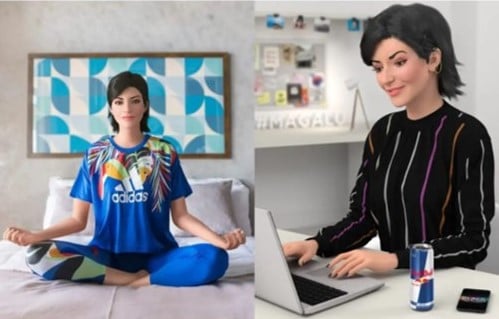
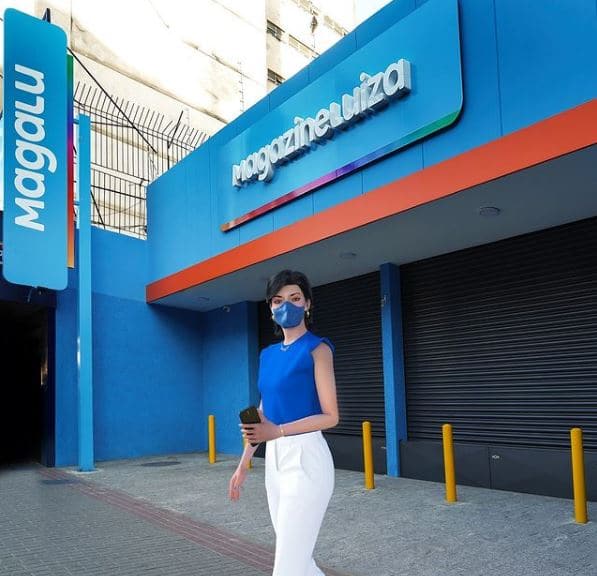
 Source: Lu, the influencer and virtual ambassador of Magazine Luiza Store (Brazil)
Source: Lu, the influencer and virtual ambassador of Magazine Luiza Store (Brazil)
In the luxury fashion market, Prada brand also announced its first virtual human model, Candy, as part of the campaign “Rethink Reality”, to communicate its new perfume. The marketing strategy replaces precisely the usual choice of celebrities for this type of campaigns, aiming to reach essentially the target of generation Z with the construction of new narratives in digital.
Fonte: Youtube – Reality” campaign for Prada’s Candy perfume launch
The partnerships with popular virtual influencers
According to research by Hyper Auditor and Virtual Humans, engagement from virtual influencers was already higher in 2019 compared to that of human influencers. It is only natural, then, that some of the well-known brands are already establishing partnerships with some of the most popular virtual influencers.
After all, virtual influencers, despite living in a virtual space, can promote the same brands as human influencers: they present the same lifestyle, have the same tastes, and wear the same clothes. There is room for more creative partnership opportunities.
Interestingly, just as human influencers now have to be transparent about partnerships with brands by identifying social media posts with the hashtag #ad, so too will virtual influencers move towards this best practice. India is officially the first country to implement regulatory standards for virtual influencers’ advertising on digital platforms.
 Source: HypeAuditor – Human influenciadores vs virtuals
Source: HypeAuditor – Human influenciadores vs virtuals
Many of the virtual influencers are also already represented by Modeling and Influencer Agencies.
Let’s look at real examples of Marketing Campaigns with popular virtual influencers: the Calvin Klein brand recently launched a partnership with some of the most popular virtual influencers, such as Lil Miquela (3M) and most recently Katii (63.7k):
Source: Youtube – Calvin Klein campaign “Speak my Truth in #mycalvins” with virtual influencer Lil Miquela alongside renowned model Bella Hadid
Source: Virtual Humans – Calvin Klein campaign with virtual influencer Katii
In 2018, the Prada brand had already chosen virtual influencer Lil Miquela for a campaign, as well as partnering with Noonoouri, for example, to go wearing Prada looks in their posts.
Also in 2018, luxury fashion brand Dior had invited the same influencer to do the brand’s instagram takeover at the time of a fashion show.
 Source: Pinterest – Virtual influencer Lil Miquela in a Prada F/W2018 Campaign
Source: Pinterest – Virtual influencer Lil Miquela in a Prada F/W2018 Campaign

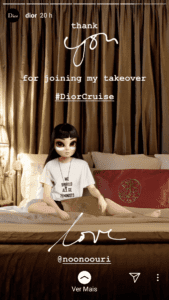
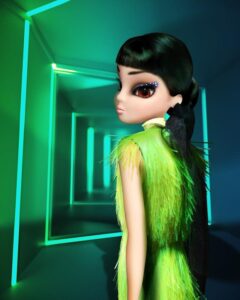
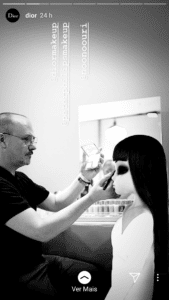
Fonte: Pinterest – Virtual influencer Noonoouri in partnership with the brands Prada and Dior
The World Health Organization has also gone one step further by partnering with a virtual influencer as part of its measures to protect against COVID-19. The chosen influencer was Knox Frost, with more than 1 million Z generation followers.
 Fonte: Instagram – Post by Influencer Knox Frost under WHO
Fonte: Instagram – Post by Influencer Knox Frost under WHO
Not only from takeovers on Instagram, sponsored posts and traditional advertising campaigns do partnerships with virtual influencers stand out. Digital events are also embracing this new reality.
The technology of the Live Shopping platform “Bambuser” (which helps brands hold shopping sessions through a live “salesperson” in the digital medium) was used for Samsung’s Galaxy S22 launch.
This was a first-of-its-kind launch, in that it was virtual influencer Zero the representative, having a live chat with TikTok creator Liam Kalevi while the live shopping event was taking place. During the broadcast, the virtual influencer wore a virtual Galaxy SS22 and took a selfie, all in real time.
 Source: Samsung branded Live Shopping event (via Bambuser Technology) with virtual influencer Zero
Source: Samsung branded Live Shopping event (via Bambuser Technology) with virtual influencer Zero
It is innovative events like these that prove the creative and vast potential of the possibilities for partnerships with brands. These virtual personas really seem to be the future of Advertising and Content Marketing – we could see that they operate in various markets such as fashion, technology, music, etc. – so any brand that wants to position itself as innovative and reach new audiences needs to be aware of this trend.
In fact, in an era when we are moving towards the metaverse, virtual influencers may even become the catalyst for this “web 3.0” direction.
Perhaps the biggest challenge is still the possibility of massifying the creation of virtual influencers with lower costs. Although some argue that in the medium and long term, creation costs would be more profitable than the costs that are invested by brands in partnerships with human influencers.
If you are reticent about this reality of virtual influencers, it is worth reflecting: within the reality of the Internet, don’t we all end up a little bit virtual influencers?



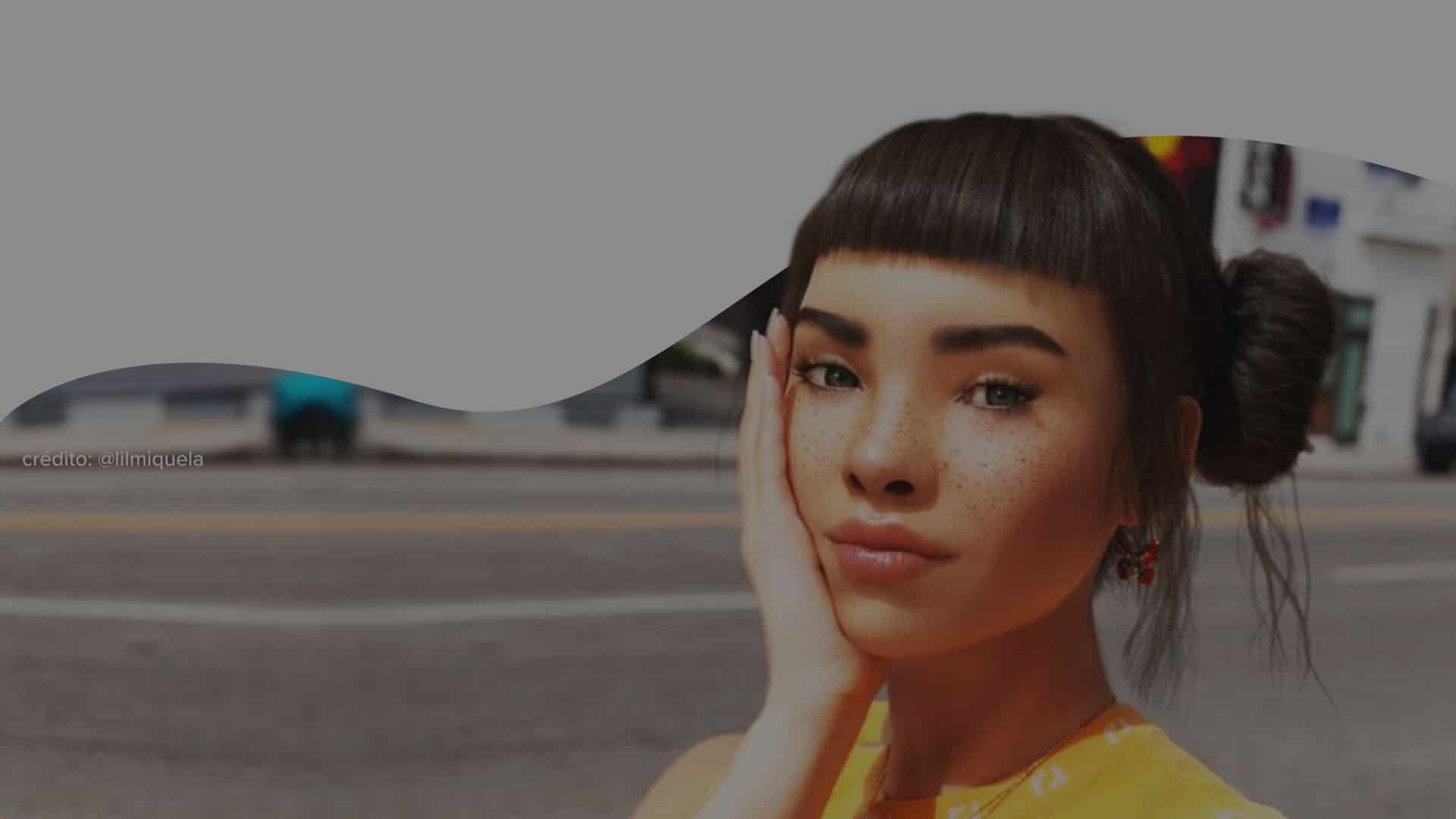
 Source: Instagram – Preview Instagram Lil Miquela
Source: Instagram – Preview Instagram Lil Miquela


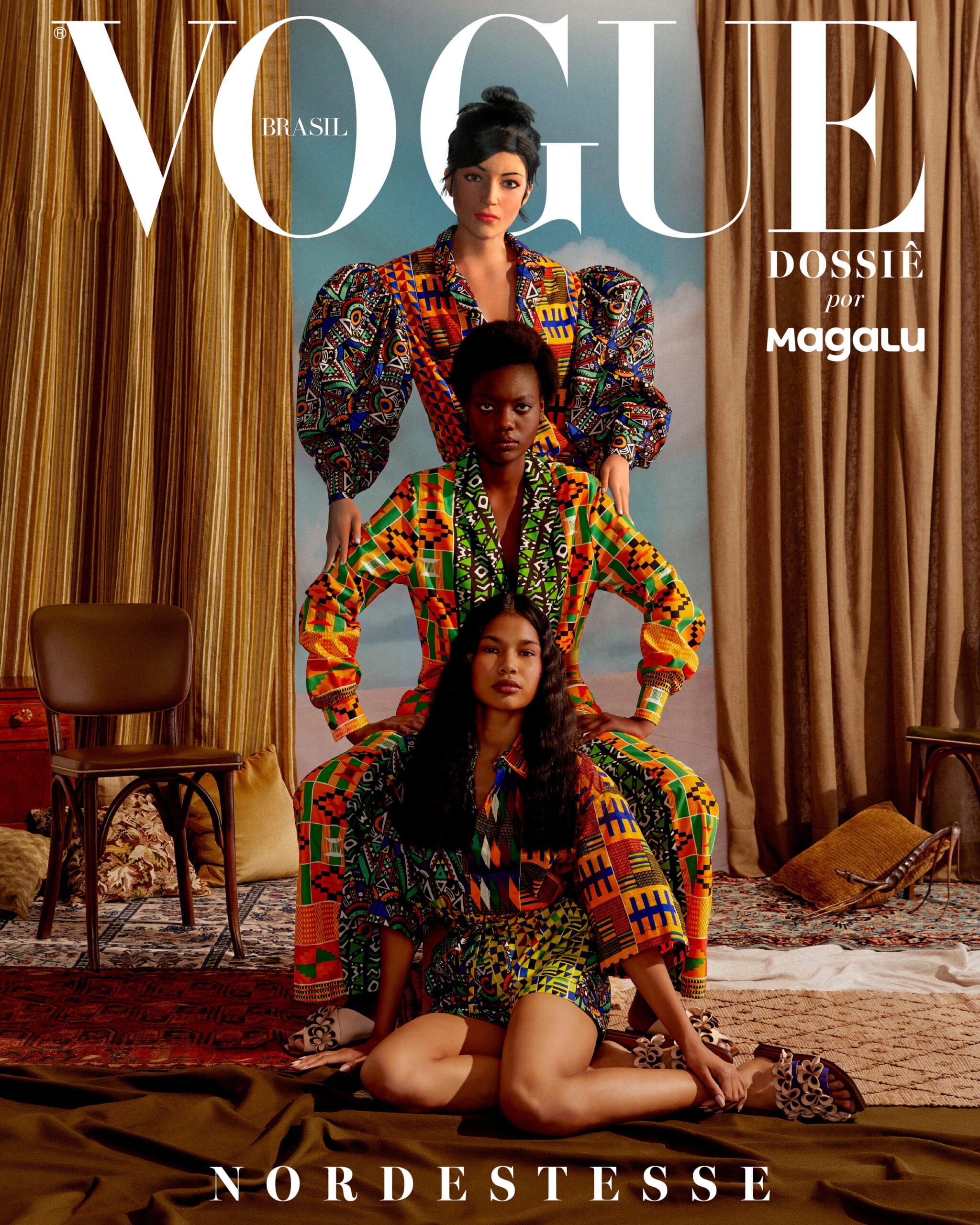 Source: Lu, the influencer and virtual ambassador of Magazine Luiza Store (Brazil)
Source: Lu, the influencer and virtual ambassador of Magazine Luiza Store (Brazil) 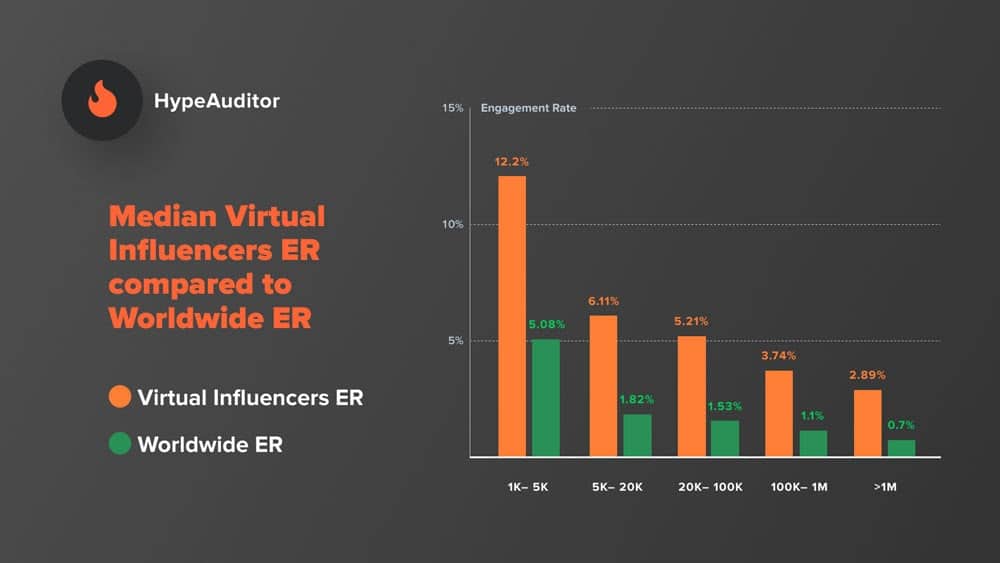 Source: HypeAuditor – Human influenciadores vs virtuals
Source: HypeAuditor – Human influenciadores vs virtuals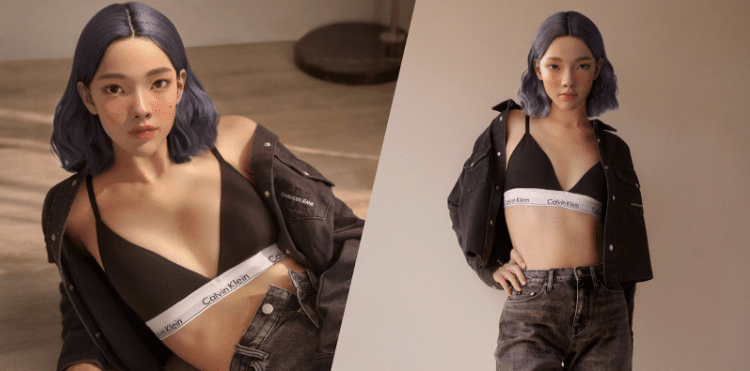
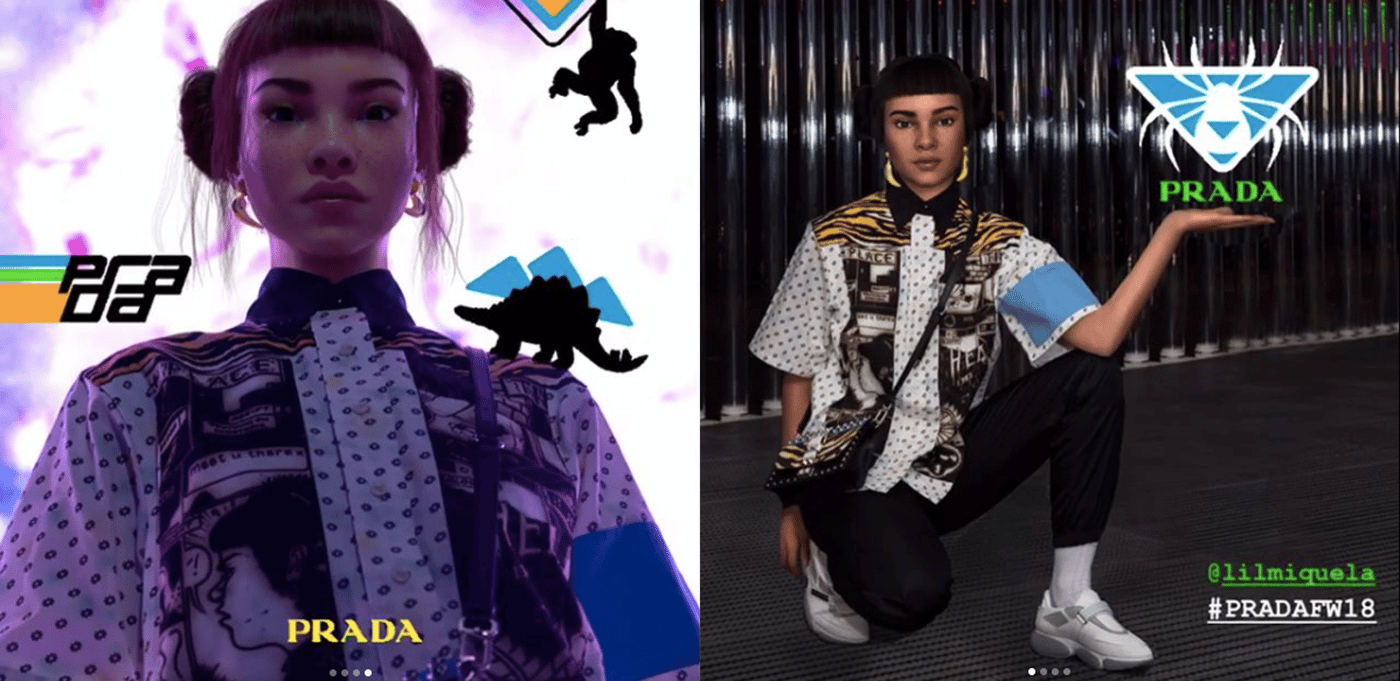 Source: Pinterest – Virtual influencer Lil Miquela in a Prada F/W2018 Campaign
Source: Pinterest – Virtual influencer Lil Miquela in a Prada F/W2018 Campaign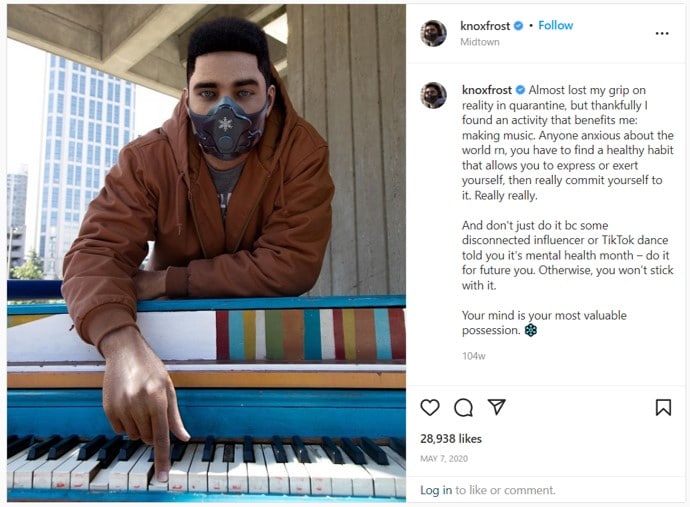 Fonte: Instagram – Post by Influencer Knox Frost under WHO
Fonte: Instagram – Post by Influencer Knox Frost under WHO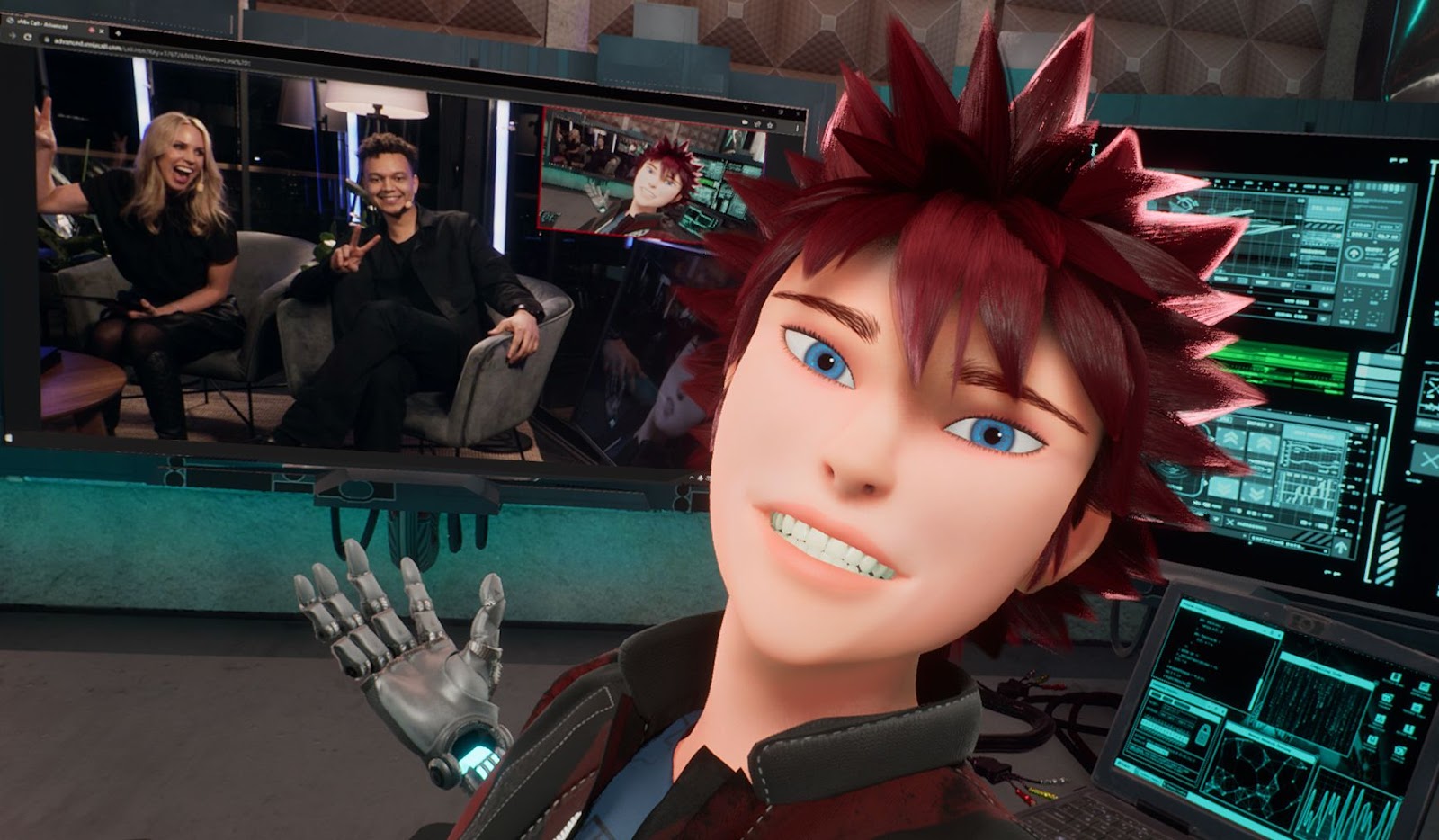 Source: Samsung branded Live Shopping event (via Bambuser Technology) with virtual influencer Zero
Source: Samsung branded Live Shopping event (via Bambuser Technology) with virtual influencer Zero




